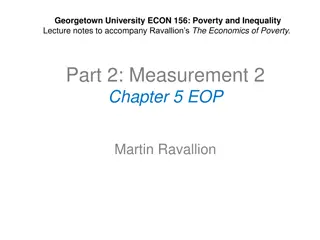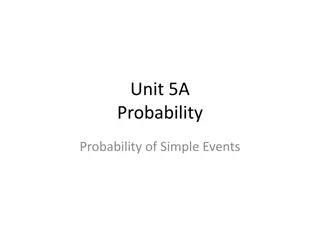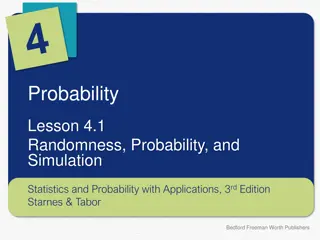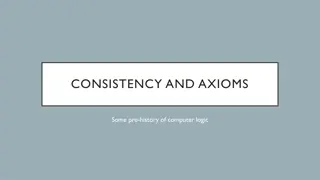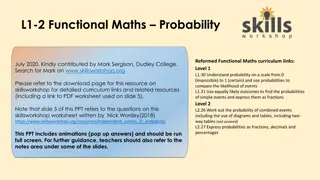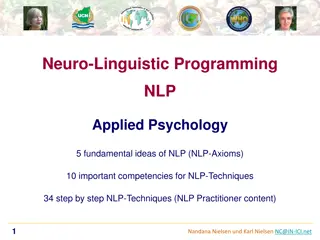Understanding Kolmogorov Axioms of Probability and Their Consequences
Exploring the fundamental principles of probability through Kolmogorov Axioms, this content delves into the rules that govern probabilities of events, such as non-negativity, total probability, and the addition rule. Handy consequences like the probability of complements, unions, and intersections are also discussed, providing insights into the foundational concepts of probability theory.
Download Presentation

Please find below an Image/Link to download the presentation.
The content on the website is provided AS IS for your information and personal use only. It may not be sold, licensed, or shared on other websites without obtaining consent from the author. Download presentation by click this link. If you encounter any issues during the download, it is possible that the publisher has removed the file from their server.
E N D
Presentation Transcript
A Little Bit of Probability 2 Kolmogorov Axioms and Some of Their Consequences
Kolmogorov Axioms of Probability To the probabilities of outcomes/events of an experiment must obey the axioms: Axiom 1: For any event A, Pr(A) 0 Axiom 2: Pr( ) = 1 Axiom 3: For a collection of mutually exclusive events, A1, A2, , An Everything else in probability theory can be deduced starting with these axioms
Handy Consequences of Kolmogorov Axioms Important consequences: A probability function assigns a probability to any event A such that: A partition of the sample space means: In words: The Ai s chop up the sample space into non- overlapping (i.e. mutually exclusive) pieces.
Handy Consequences of Kolmogorov Axioms Important consequences: Probability of a complement Probability of nothing in the sample space
Handy Consequences of Kolmogorov Axioms Important consequences: Probability of a union of non-disjoint events In words: The probability of A or B is the probability of A plus the probability of B minus the probability of A and B Don t count the probabilities of A and B twice if there is overlap between the events
Handy Consequences of Kolmogorov Axioms DeMorgan s Laws DeMorgan Law 1 DeMorgan Law 2
Example Billy is hungry. Let A = Billy went to Auntie Anne's for a pretzel. Pr(A) = 0.49 Let B = Billy went to Buffalo Wild Wings. Pr(B) = 0.54 Draw a Venn diagram for this scenario assuming A and B are not mutually exclusive. What would that mean? Compute Compute Compute Compute
Example It isn t necessary to use R for this question. All you need for most probability problems is a calculator. # Data from the question: A <- 0.49 B <- 0.54 # Pr(A') An <- 1 - A An # Pr(A union B) = Pr(A) + Pr(B) - Pr(A intersect B) AandB <- ((A+B) - 1) AandB AorB <- A + B - AandB AorB # Pr(A' and B') = Pr( (A or B)' ) 1-AorB # Pr(A' or B') = Pr( (A and B)' ) 1 - AandB





